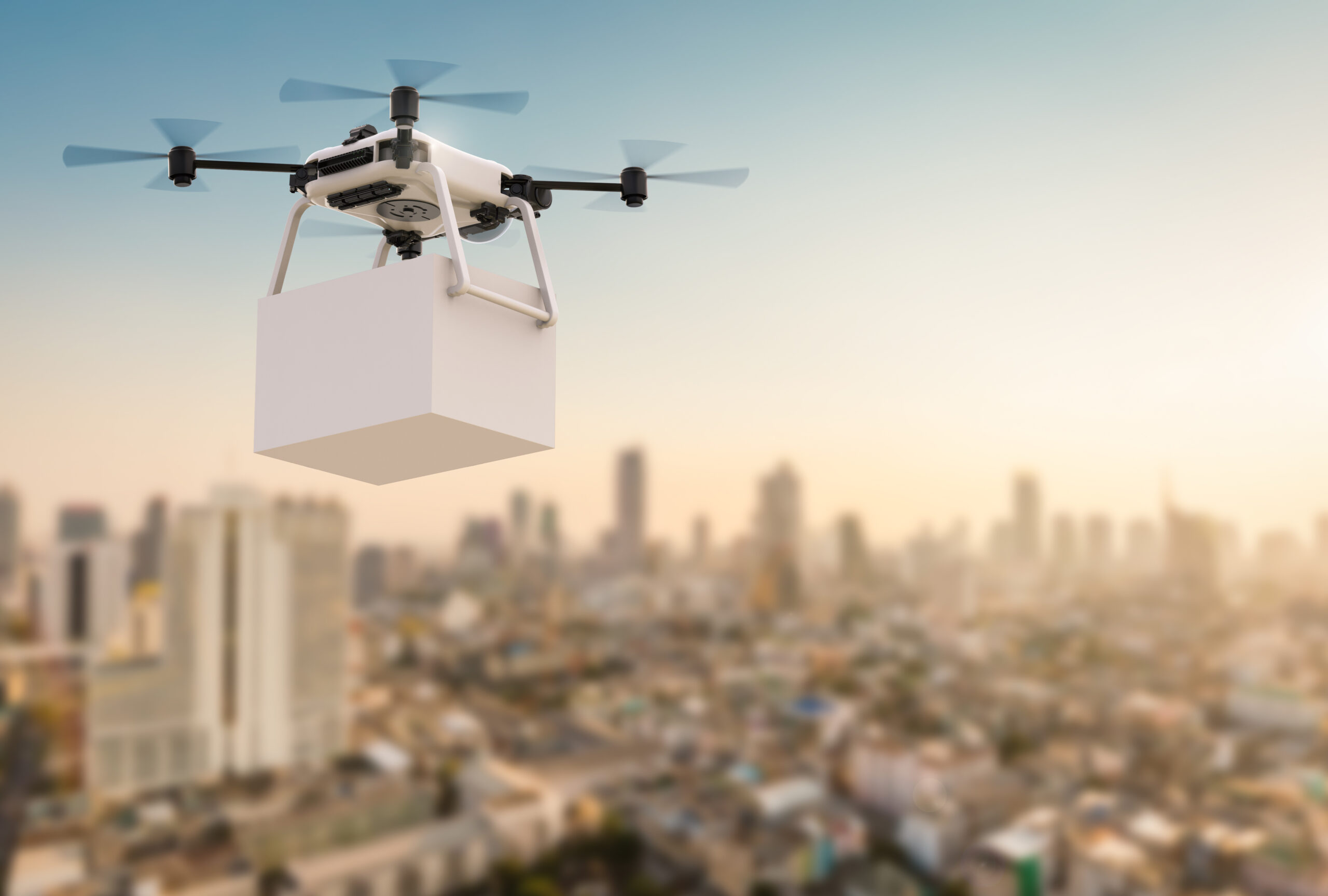Article by: Asst. Prof. Suwan Juntiwasarakij, Ph.D., Senior Editor
มีการใช้โดรน (อากาศยานไร้นักบินขับขี่) มาแล้วตั้งแต่ต้นปี 1900 แม้ว่าในตอนแรกจะใช้เฉพาะสำหรับการฝึกฝนให้แก่ทหารเท่านั้น ซึ่งต่อมาโดรนเหล่านี้ได้ติดตั้งเข้ากับอุปกรณ์สอดแนมแบบแบบเรียลไทม์เพื่อตรวจสอบการเคลื่อนไหวของกองกำลังหลังแนวข้าศึก โดรนที่ได้กล่าวถึงนี้ ได้แก่อุปกรณ์บินอุปกรณ์ลอยน้ำและอุปกรณ์อื่น ๆ รวมถึงอากาศยานไร้คนขับ (UAV) ที่บินได้ด้วยตัวเองตามเส้นทางที่กำหนดโดยคอมพิวเตอร์ที่ติดตั้งอยู่ในตัวโดรน หรือบินตามตามคำสั่งที่ส่งจากนักบินบนภาคพื้นดิน จะเห็นว่าเกิดการปฏิบัติของโดรนที่แผ่ขยายออกไปยังอุตสาหกรรมหลายประเภท ตั้งแต่การอุตสาหกรรมภาพยนตร์ไปจนถึงอุตสาหกรรมการเกษตร

Source: Preparing for takeoff: How the government sector can leverage drones, Pw

Source: Preparing for takeoff: How the government sector can leverage drones, Pw
สำหรับแอพพลิเคชั่นโดรนมักติดตั้งอุปกรณ์เซ็นเซอร์ต่าง ๆ นานาชนิด เช่น ระบบนำทาง GPS กล้องทีวี อุปกรณ์สร้างภาพจากเรดาร์ อุปกรณ์ถ่ายภาพอินฟราเรด และเลเซอร์เพื่อใช้ในการตรวจสอบและกำหนดเป้าหมาย ตัวอย่างเช่น โดรนทางทหารที่เป็นขีปนาวุธนำวิถีด้วยเลเซอร์ จากการวิเคราะห์ของ Guardian คาดว่าประเทศต่าง ๆ จะซื้อโดรนติดอาวุธจำนวนมากในทศวรรษที่กำลังจะมาถึง ในประเทศสหรัฐอเมริกานั้นคาดว่าจะซื้อโดรน 1,000 ลำภายในปี 2028 ซึ่งสูงกว่าจีนที่มีอยู่ 68 ของจีนและรัสเซียที่มีอยู่เพียง 48 การใช้โดรนติดอาวุธเป็นที่ถกเถียงกันโดยเฉพาะอย่างในประเทศที่สหรัฐอเมริการซึ่งแน่นอนว่าไม่ได้อยู่ในภาวะสงคราม

Source: Preparing for takeoff: How the government sector can leverage drones, PwC
ในอินเดียเพิ่งมีการออกกฎข้อบังคับสำหรับการใช้โดรนเพื่อจุดประสงค์ทางการค้าซึ่งข้อกำหนดด้านใบอนุญาตจะกำหนดตามน้ำหนักและความสูงในการบินของโดรน นอกจากนี้ยังมีการวางข้อจำกัดในการบินโดรนใกล้สนามบินและสถานประกอบการที่ละเอียดอ่อน ความเป็นส่วนตัวและการปกป้องพลเมืองทรัพย์สินและข้อมูลนั้นเป็นเรื่องที่สำคัญ อ้างอิงตามกฎข้อบังคับดังกล่าว พบว่ามีการกำหนดกฎซึ่งบังคับใช้โดยพิจารณาตามน้ำหนักของอุปกรณ์โดรน

Source: Preparing for takeoff: How the government sector can leverage drones, PwC
โดรนมาที่ติดตั้งเทคโนโลยีล้ำสมัยต่าง ๆ เหล่านี้บรรจุอยู่ในโครงสร้างน้ำหนักเบา อย่างไรก็ตาม โดรนเหล่านี้ความแตกต่างกันอย่างมาก ในแง่ของขนาด น้ำหนักบรรทุก ความจุ ความสามารถในการบินในหน่วยเวลา และฟังก์ชันการทำงาน ทั้งนี้ขึ้นอยู่กับวัตถุประสงค์ที่จะนำไปใช้งาน น้ำหนักของโดรนและแบตเตอรี่เป็นปัจจัยกำหนดว่าจะบินได้นานเท่าใด

Source: Preparing for takeoff: How the government sector can leverage drones, PwC



Source: Preparing for takeoff: How the government sector can leverage drones, PwC



Source: Preparing for takeoff: How the government sector can leverage drones, PwC
TAKE-HOME MESSAGE
ผู้ประกอบการจะต้องไม่ละเลยความเสี่ยงที่มาพร้อมกับการใช้งานโดรน ความปลอดภัยทางไซเบอร์ยังคงเป็นประเด็นสำคัญอยู่ ข้อมูลที่ละเอียดอ่อนหรือที่เป็นกรรมสิทธิ์อาจถูกบุกรุกได้หากโดรนถูกแฮ็กหรือสูญหาย โดรนยังคงเป็นปัญหาและก่อให้เกิดข้อกังวลในเรื่องความเป็นส่วนตัวและความปลอดภัยของแต่ละบุคคล ผู้ที่จะใช้โดรนอย่างจริงจังจะต้องมีแผนควบคุมเพื่อลดความเสี่ยงดังกล่าว และต้องตรวจสอบให้แน่ใจว่ามีนโยบายและกระบวนการต่าง ๆ ที่สอดคล้องกับกฎระเบียบในปัจจุบัน












